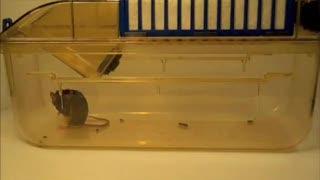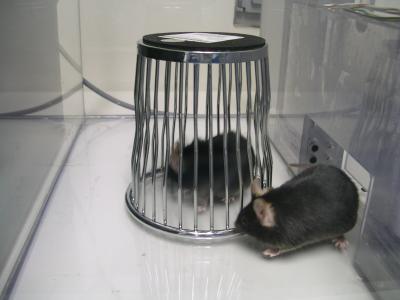To test their hunch, the researchers examined effects of GRN-529 in a naturally occurring inbred strain of mice that normally display autism-relevant behaviors. Like children with ASDs, these BTBR mice interact and communicate relatively less with each other and engage in repetitive behaviors – most typically, spending an inordinate amount of time grooming themselves.
Crawley's team found that BTBR mice injected with GRN-529 showed reduced levels of repetitive self-grooming and spent more time around – and sniffing nose-to-nose with – a strange mouse.
Moreover, GRN-529 almost completely stopped repetitive jumping in another strain of mice.
"These inbred strains of mice are similar, behaviorally, to individuals with autism for whom the responsible genetic factors are unknown, which accounts for about three fourths of people with the disorders," noted Crawley. "Given the high costs – monetary and emotional – to families, schools, and health care systems, we are hopeful that this line of studies may help meet the need for medications that treat core symptoms."

The video shows an untreated BTBR mouse absorbed in repetitive self-grooming.
(Photo Credit: MuYang, Ph.D., Adam Katz, and Jacqueline Crawley, Ph.D., NIMH Laboratory of Behavioral Neuroscience)

A mouse pays a social visit to a novel animal.
(Photo Credit: MuYang, Ph.D., and Jacqueline Crawley, Ph.D., NIMH Laboratory of Behavioral Neuroscience)